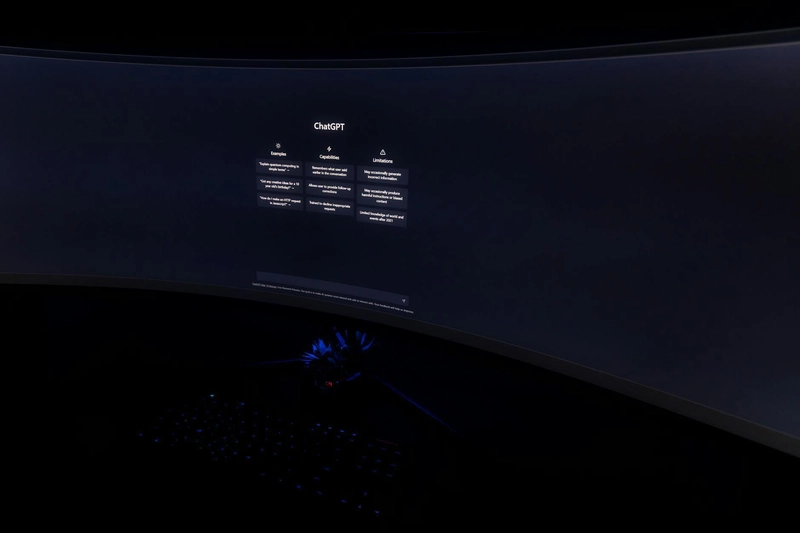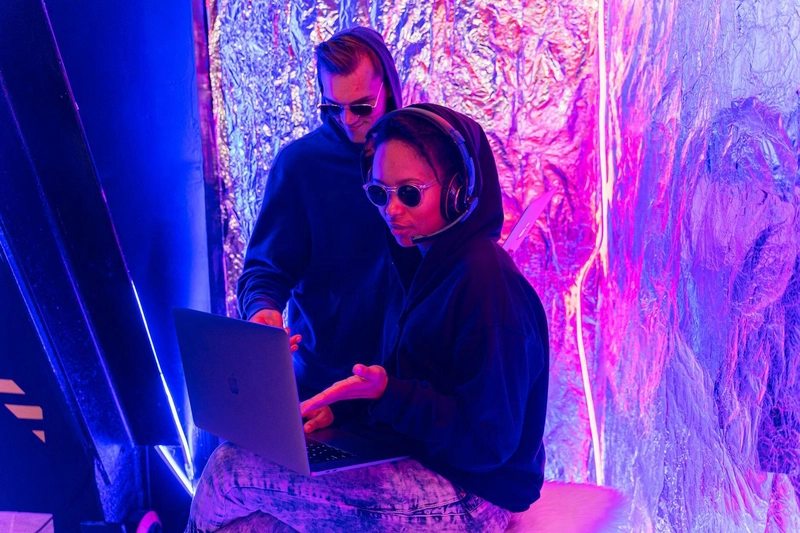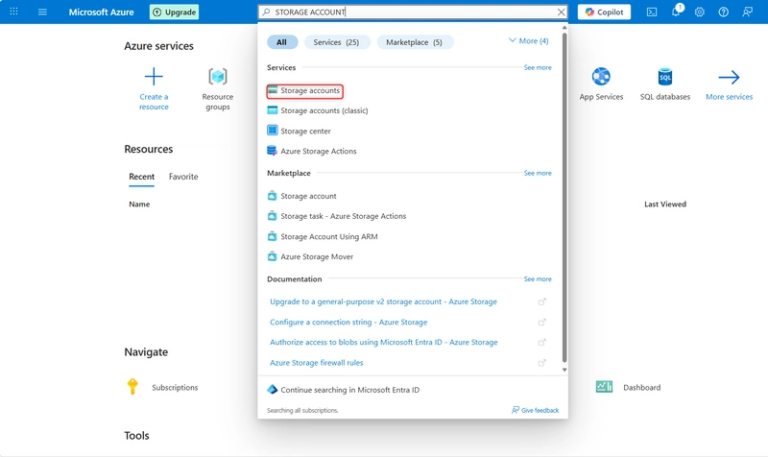Vibe Coding: Why AI-Powered Development Is Reshaping Software Creation
Vibe coding has quickly shifted from an insider buzzword to a mainstream method shaping how software gets built. At its core, this practice lets programmers and analysts describe what they want in plain language, then rely on powerful AI to do the heavy lifting—turning ideas into working code in a fraction of the usual time. The appeal is simple: speed, creativity, and a lower barrier to entry for those who aren’t expert coders.
This trend isn’t just about making coding easier. It’s about changing the coder’s role from line-by-line writer to idea architect and quality czar. AI now shoulders much of the grunt work, freeing professionals to focus on high-level structure, design, and ensuring quality. Businesses like startups and enterprise teams embrace vibe coding for fast prototyping and custom internal tools, driving adoption rates unlike any previous development movement.
AI-powered development doesn’t erase the need for skilled judgment or technical depth, but it does put a new premium on knowing how to work with, manage, and verify the rapid output from these models. As this practice spreads, the best developers aren’t just fluent in code—they’re experts at getting results from AI, reviewing its work, and steering entire projects with confidence.
Watch: The Best AI Vibe Coding Agents | July 2025 Edition
What Is Vibe Coding? The Paradigm Shift Explained
Photo by Matheus Bertelli
Vibe coding is shaking up software development by reimagining the coder’s job from script writer to creative guide. The term, introduced by AI researcher Andrej Karpathy in 2025, captures the heart of this change: developers and analysts can now express what they want using natural, conversational prompts. The AI handles the translation, turning ideas into working code—fast. This approach relies on large language models that understand instructions in plain English and can generate clean, functional code on demand.
Let’s break down what makes vibe coding so unique and why it’s drawing interest from all corners of the tech world.
From Typing to Talking: How Vibe Coding Works
Traditional programming means writing detailed instructions line by line. With vibe coding, the process begins with a broad description—a “vibe”—of what you want an app, script, or feature to do. You might say, “Make a tool that analyzes sales data and shows a chart,” and the AI takes it from there.
Instead of sweating the syntax, your job is to have a running dialogue with the AI. You direct, refine, and iterate. If the first draft isn’t perfect, you ask the AI to tweak a feature or fix a bug. This conversation-driven workflow makes it much easier for someone without deep coding experience to bring ideas to life.
If you want a deeper technical overview, check out this resource from MIT Technology Review that explains vibe coding’s mechanics and why it’s getting traction.
The Vision and Methodology Behind Vibe Coding
The roots of vibe coding are clear: unlock creativity and remove friction. By describing goals instead of writing every detail, you shortcut the old development grind. At the same time, AI gives immediate feedback, so each prompt or change feels like a live conversation. This loop—ideate, prompt, review, refine—leads to rapid builds and instant adjustments.
Here’s the typical vibe coding workflow:
- Express the idea: Start with a prompt, even if it’s rough.
- AI generates code: The model builds out the requested functionality.
- Review and refine: You skim the code, check behavior, and request tweaks.
- Deploy or repeat: Push it live, or go back for more changes.
What’s different from no-code tools? Vibe coding doesn’t mean skipping code altogether. The AI writes real code under the hood, and developers who know how to read and edit it can get more out of the process.
The Shift: Idea Architect vs. Coder
With vibe coding, your value comes from shaping ideas, setting requirements, and managing outcomes. You move away from repetitive grunt work and focus more on design, integration, and quality. Skilled users become “conductors,” orchestrating the AI’s work and handling complex requirements and trade-offs.
This means:
- Less time stuck in syntax
- More emphasis on architecture and testing
- Faster prototypes (great for internal tools and niche apps)
- Broader access for less-experienced builders
You don’t just use AI as a coder’s sidekick—you treat it like a junior developer, supplying direction, catching mistakes, and steering the results until they match your vision.
Why the Excitement? Impact on Individuals and Teams
Vibe coding isn’t just a productivity boost. It has industry-wide ripple effects:
- Entry point lowered: Non-programmers can now build working tools.
- Speed of innovation: Teams ship prototypes and custom solutions much faster.
- Changing roles: Developers spend less time typing and more time strategizing.
- Broader adoption: Startup founders, data analysts, and even business users can all jump in.
For some, vibe coding turns code creation into a creative exchange. For teams, it means reimagining workflows and discovering new ways to solve technical problems.
Vibe coding’s influence will grow as AI models become smarter and more reliable. But as recent industry analysis from IBM shows, it also brings fresh challenges around code quality, security, and team workflows that skilled software professionals are uniquely equipped to handle.
Vibe coding isn’t just another tool—it’s a different way of building, thinking, and creating with AI as your partner.
Why Is Vibe Coding Trending? Key Drivers Behind Its Popularity
The rapid rise of vibe coding isn’t an accident. It’s driven by a fresh approach to software creation, where the gap between idea and execution gets smaller every day. Instead of fighting with error messages or memorizing syntax, people across all skill levels are now using natural language to bring their projects to life—while AI handles much of the complexity. Let’s break down why vibe coding is capturing so much attention in the tech world and how it’s transforming both individual creativity and team workflows.
Democratizing Software Development
Photo by Antoni Shkraba Studio
Vibe coding is powering the most accessible wave of software creation ever seen. By letting users describe what they want in plain language, it opens the door for non-programmers and veterans alike. Imagine building a dashboard or automating a task without typing out every function or script—just describe the intended result, and let the AI handle translation.
This ease of entry means:
- Non-technical users can now build real apps, customize business tools, or automate tasks without years of coding experience.
- Developers and analysts can shortcut tedious coding and focus on what makes their work different—creative structure, data logic, and user experience.
- Fast learning loops spring up, as users see instant feedback and understand the connection between prompt and output.
As noted in Forbes’ analysis of AI transformation in software development, this shift is lowering barriers across the industry and changing who gets to build digital solutions.
Accelerating Prototyping and Experimentation
Vibe coding changes the pace of innovation. By shrinking the cycle from idea to working model, it gives creators and teams the power to test, iterate, and improve without bottlenecks.
Here’s how this acceleration looks in real practice:
- Prototyping in hours, not weeks: You can turn a napkin sketch into a usable demo the same day. Whether it’s a new feature, data tool, or small app, vibe coding means quick testing and learning.
- Low cost of failure: With less time and fewer resources spent on each version, experimentation becomes routine. Try one approach, trash it, try another.
- Accessible to teams of any size: Small teams, solo freelancers, or large companies all get the same benefit—new ideas tested at the speed of thought.
A key impact, as highlighted by Coding Temple’s overview of vibe coding’s influence on programming, is that the creative process isn’t slowed by technical hurdles. People focus more on design, logic, and outcomes instead of the details of code.
Transforming Professional Workflows and Teams
The effects of vibe coding go far beyond solo builders. It’s reshaping how teams work, and what individual roles look like:
- Senior developers are now AI supervisors. Their job shifts from crafting every line of code to reviewing, guiding, and verifying the AI’s work. They act like architects and quality assurance leads, concentrating on product strategy and system stability.
- Teams are restructured around outcomes, not roles. A single AI-powered developer can push projects that once required larger teams. The focus tilts toward strategic decisions and collaboration rather than granular implementation.
- Continuous feedback loops power growth. Using AI’s code as a teaching resource, developers learn from every round—checking logic, probing for errors, and discovering new tech quickly.
Emerging Tech Brew’s look at the vibe coding shift describes how this conversational AI workflow is making development cycles faster and more flexible, encouraging a shift in mindset about what it means to code.
The wave driving vibe coding’s popularity is as much about collaboration and speed as it is about access. It’s a genuine transformation for anyone invested in building software, from the first prompt to the final product.
Challenges and Risks of Vibe Coding in Modern Development
Vibe coding unlocks speed and access for building software, but it’s not a silver bullet. The AI can whip up working code in seconds, but speed alone can’t guarantee trustworthy, secure, or maintainable results. Knowing when and how to apply human judgment remains key. Let’s look closer at the biggest risks with vibe coding and what they mean for real development work.
Software Quality and Security Concerns
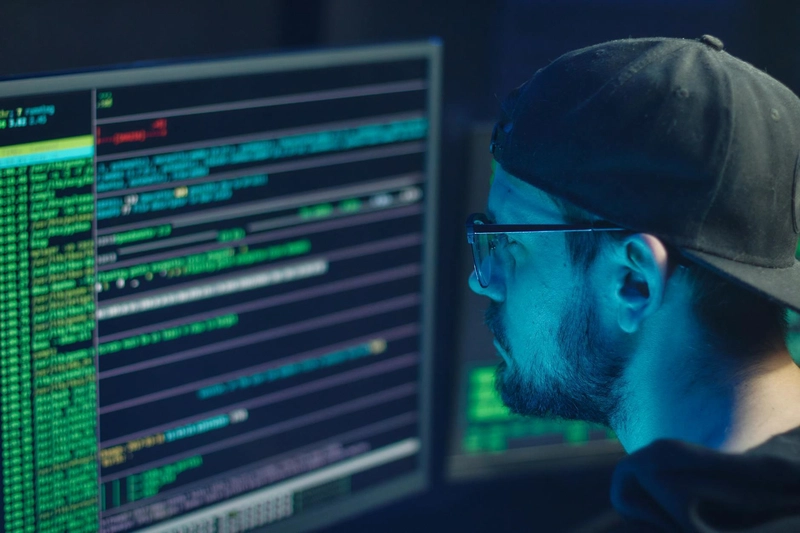
Photo by Mikhail Nilov
AI-generated code brings serious risks that no developer can ignore:
- Hidden Bugs and Flaws: The code an AI writes often works on the surface, but logic errors, edge-case bugs, and even strange “hallucinated” behaviors can lurk beneath. The more you trust the AI blindly, the higher your risk of rolling out code that crashes or behaves unpredictably in production.
- Security Vulnerabilities: AI tools can miss classic software risks—SQL injection, weak authentication, and insecure defaults crop up more often than people realize. Unverified snippets might bypass established security practices, introducing holes that attackers will find sooner or later. Get a full insight into these risks in this recent security analysis on generative AI coding.
- Lack of Context: Many code generators only know what you tell them, so missing requirements or business rules rarely show up on their own. A small miscommunication can ripple into major faults.
Human oversight isn’t optional—it’s essential. Here’s how experienced teams handle code from vibe coding tools:
- Comprehensive review: Don’t settle for a cursory glance. Developers need to read, test, and walk through every key section, especially interfaces and logic-heavy parts.
- Rigorous testing: Build out robust test suites, including unit, integration, and security tests. Automated code always needs extra safety checks.
- Verification loop: Treat the AI like a new teammate—ask it to explain its code, probe its assumptions, and keep asking “why” until every part makes sense.
The smarter approach is a blend: use AI for fast drafts and refactoring, but always pair it with sharp human review. As outlined in this detailed look at AI code quality management, combining both strengths is the safest route forward.
Long-term Maintainability and Compliance
The real test for any software isn’t just how quickly you can build version 1. It’s how easy your team can update, scale, audit, and trust that code years from now. Vibe coding’s rapid-fire output can make that much harder if you’re not deliberate.
Here are the pain points teams face:
- Ghost Code: AI-generated scripts can be filled with patterns and libraries nobody on your staff truly understands. When something breaks months later, debugging can stall as developers puzzle over unknown sections.
- Missing Documentation: Unless you consistently prompt for docstrings, comments, and clear explanations, you’ll end up with “black box” code that is tough to onboard, hand off, or audit for compliance down the line.
- Scalability Bottlenecks: Quick prototypes might ignore best practices that don’t show up until the app grows—things like modular structure, environment configuration, and robust error handling.
For regulated industries or large enterprises, these issues become even more pressing. Maintaining compliance means being able to prove who wrote each feature, why a decision was made, and that privacy or data-use rules are respected. Black box outputs from an AI tool make these audits tricky, if not impossible, without clear oversight procedures. A useful breakdown on the compliance front can be found in CircleCI’s discussion of generative AI risks and rewards.
Best practices for long-term success:
- Document as you go: Direct your AI to add comments and summaries for every function or routine it generates.
- Adopt coding standards: Set rules on style, structure, and library use before writing code. Prompt the AI to follow your house rules, not just whatever works.
- Maintain human-in-the-loop: Regularly audit the generated code, check for security compliance, and enforce correct usage of legal or regulated data.
By keeping your hands on the wheel, you make the most of vibe coding’s speed while protecting your software’s long-term health.
The Future of Vibe Coding: Human-AI Collaboration and Strategic Vision
Vibe coding is not just a new tool for coders—it’s a true shift in how people and AI work together to create software. As AI gets stronger at understanding what we want and translating those ideas into functional code, the job of the developer changes. The coder is quickly becoming part AI supervisor, part systems architect, part product thinker. Success in this space depends less on memorizing syntax and more on leading projects, making smart decisions, and steering AI output toward robust, secure, and scalable outcomes.
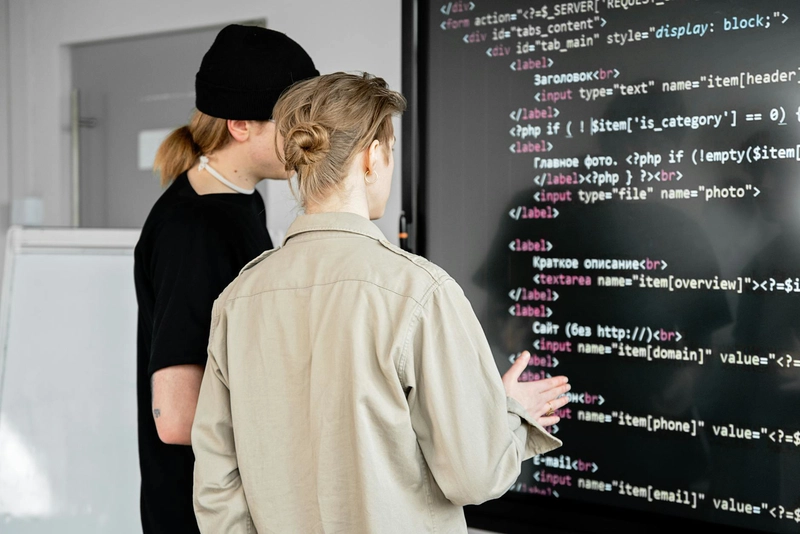
Photo by Mikhail Nilov
Developers as AI Supervisors and Architects
When you use vibe coding to build something, you move away from being a traditional coder and move toward a leadership role. You are there to direct, check, and refine the huge volume of code an AI can produce. This is where developers stand out:
- Guiding the AI: Clear instructions, specifics on features, and requirements shape the quality of what the AI delivers.
- Verifying output: Reading, testing, and restructuring AI-generated code becomes the main skill. This keeps logic, security, and business rules tight.
- Maintaining standards: Developers ensure every project fits with company principles, industry best practices, and long-term needs.
This shift is not about less work—it’s about different work. You’re not assembling every piece yourself, but you are making sure everything fits and performs as needed. As Forbes notes in their feature on AI’s influence, quick prototyping and turnarounds are now expected, but high-level oversight and strategic thinking are what give teams a real advantage.
Product Thinking in the Vibe Era
In the world of vibe coding, raw execution matters less than the ability to see the big picture. It’s not about pumping out hundreds of features. It’s about understanding what should be built, how people will use it, and how the parts connect. This is where product thinking becomes essential:
- Setting clear goals: Every successful project starts with a clear focus on the user’s problem.
- Defining requirements: The ability to write effective prompts, specify must-have features, and translate business goals directly into technical outcomes is crucial.
- Feedback loops: Testing with real users and tweaking AI prompts help close gaps between vision and result, creating better products, faster.
Success goes to those who blend user-focused design with the powerful productivity boost that AI offers. These new skills position developers to handle projects with bigger impact and responsibility.
Teamwork and Strategic Oversight With AI
As AI takes on the repetitive work, teams look different. You don’t need a room full of junior coders for routine scripts or boilerplate. Now, a single developer with the right AI tools can push a project’s core much further. But this raises the bar for team leads:
- Coordination becomes about shaping the overall architecture, not just splitting tickets.
- System design focuses on long-term growth, integration with existing apps, and security.
- Continuous auditing is standard. The team checks not only if something works, but if it stays maintainable and secure as requirements change.
A recent Nucamp feature on the future of vibe coding predicts this hybrid model will soon be the norm—instead of many hands, projects will rely on a few technical minds who can manage both people and AI systems efficiently.
Architectural Vision: Designing for Tomorrow
AI can write functions, build pages, and connect data pipelines, but it can’t see around corners. People are the ones making decisions about architecture—choosing how everything fits, which tools scale, and what risks to avoid. Forward-thinking developers provide this strategic vision to every project:
- System architecture: Deciding on frameworks, security layers, and app structure with an eye toward performance and future needs.
- Microservices and modularity: Breaking problems up so AI can fill the gaps, but keeping teams ready to swap, upgrade, or replace parts as the tech changes.
- Scalability and resilience: Considering not just “does it work?” but “will it keep working as the team, data, or user base grows?”
For more on how AI is transforming software architecture, check out Imaginary Cloud’s breakdown of AI-driven trends in architecture.
As vibe coding matures, the job isn’t handed to AI, but shifted to a new kind of developer—one who directs, curates, and envisions software with both human and machine strengths. The winners will be the ones who adapt and keep asking: what’s possible when you combine sharp minds with fast, flexible AI?
Conclusion
Vibe coding is trending because it gives creators more freedom and speed while reducing the friction found in traditional development. The lower entry barrier and nearly instant results attract those eager to turn ideas into working products, yet quality and security still depend on sharp human review. Treating AI as a collaborator, not a replacement, gives developers more time for design, testing, and big-picture thinking. Mix practical verification with creative direction and you unlock the full power of AI-driven tools—without sacrificing long-term value or safety. Consider integrating vibe coding into your workflow to stay ahead, sharpen your skills, and push creative boundaries. Thanks for reading—share your experiences or insights as this new chapter in coding takes shape.
